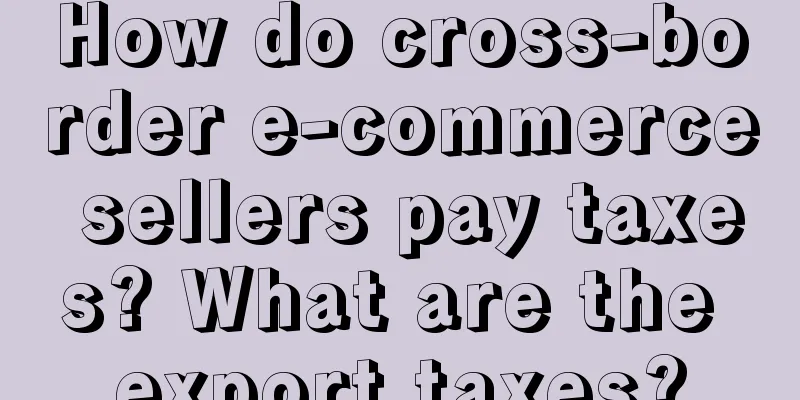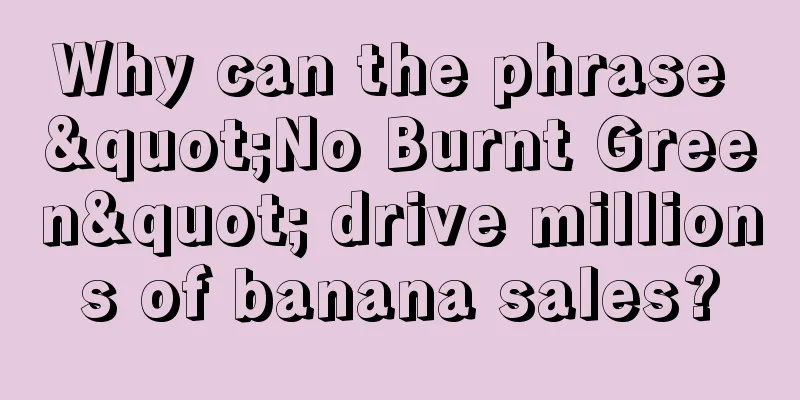How do cross-border e-commerce sellers pay taxes? What are the export taxes?

|
We all know that cross-border e-commerce is developing rapidly now. Many people want to do a good job in cross-border e-commerce. However, before opening a store, you need to understand the cross-border e-commerce platform and how to pay taxes. How do cross-border e-commerce sellers pay taxes? 1. How do cross-border e-commerce sellers pay taxes? In 2019, the single transaction limit for cross-border e-commerce retail imported goods is 5,000 yuan, and the annual transaction limit is 26,000 yuan. In the future, it will be increased as residents' income increases, and the policy will further relax restrictions on cross-border consumption by Chinese residents. 1. Import tariff: refers to the tax that needs to be paid on imported goods passing through a country's customs border. Calculation method: ad valorem, ad quantity, compound taxation, and some special commodities will use special calculation methods. 2. Luggage and postal tax: refers to the import tax on luggage and postal items 3. Value-added tax: my country stipulates that the basic value-added tax rate is 17%. For certain important materials related to national economy and people's livelihood, the value-added tax rate is 13%. 4. Consumption tax: At present, the country only collects consumption tax on four types of products. The first is consumer goods whose excessive consumption will cause harm to health, such as tobacco, alcohol, firecrackers, etc.; the second is luxury goods; the third is high-energy consumption products; and the fourth is non-renewable petroleum-based consumer goods. 2. What are the export taxes? 1. Tariffs: Importing goods from countries/regions outside the EU to EU member states requires paying tariffs, and the tax rate may range from 0% to 25%. 2. Import VAT: Import VAT is usually a tax that can be refunded. 3. VAT: Value added tax, or VAT for short, is a tax levied on the value added generated during the circulation of goods or services. In Europe, sales VAT is levied by VAT-registered merchants on their sales in Europe and reported and paid to the relevant national tax authorities. If you want to open a cross-border e-commerce store, you must pay taxes according to the rules, because this is the responsibility and obligation of every citizen. Here we also remind you to understand the above types of taxes and then pay taxes according to the law. Recommended reading: How do small businesses start cross-border e-commerce? What do they need to plan? How is Shopee cross-border e-commerce? How to join? Is Shopee cross-border e-commerce reliable? Is it worth doing? |
<<: Is the refund rate on Shopee high? Is it okay if I don't agree to a refund?
>>: How much does it cost to open a store on Amazon without supply? How to do it?
Recommend
How many sites does the Lazed platform have? How do I choose?
There are many cross-border e-commerce platforms o...
Writing copy? The informal kind
In this article, the author introduces four specia...
With the rise of the male beauty economy, how can the beauty and personal care market capture new groups and increase growth?
This article starts from the reasons for the rise ...
How is the profit of temu platform? How to settle accounts on temu platform?
There are thousands of high-quality domestic and f...
How to check the logistics of eBay? What are the methods?
With the rapid development of e-commerce platforms...
Case analysis: Coca-Cola’s brand naming, slogan, and brand story
Coca-Cola is currently a popular brand and beverag...
How to choose hot products on the shein platform? What are the product selection techniques on the shein platform?
In the vast ocean of e-commerce, Shein platform at...
How can the maternal and infant industry do a good job in private domain? Mastering these 4 points is the key!
This article mainly talks about how to do a good j...
What does Amazon's traffic limit mean? In what situations will the traffic be limited?
No matter which platform you open a store on, ever...
How about doing cross-border e-commerce at home? Is it easy?
Many domestic sellers will find a good team before...
How often is Amazon's Order Defect Rate updated? What does the Order Defect Rate mean?
For sellers selling goods on the Amazon platform, ...
Xiaohongshu has small ambitions, but local businesses are getting anxious
In order to turn losses into profits, Ele.me has b...
83 out of 91 works became hits, how did @热月是我是! do it?
In the world of short videos, content that touches...
Can Shopee deliver goods to customers by itself? How to deliver goods?
To conduct cross-border e-commerce business on the...
What is the appropriate advertising rate on eBay? What are the fees eBay charges?
eBay is a relatively fast-growing cross-border e-c...









